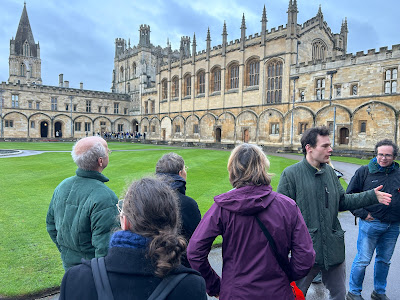It seems that the men and children who were killed that day were settled in Oxford, and probably lived on the fringes of the main town, in an area now known as St Clement's. But even though they were part of Oxford society, clearly they were also still seen as foreign, that is, as Danish outsiders, and thus were associated with Viking raids on England that the King was struggling to repel. They became the scapegoats for the wider problem of Norse incursions and the violence these brought.
The evidence suggests that the Danes were not in a position to defend themselves, and were fleeing their attackers as they were killed. They fled to St Frideswide’s church that was located where Christ Church College of Oxford University now sits. They hoped to find sanctuary in a building committed to God. But when their pursuers couldn't force the Danes out, these pursuers set fire to the church.
The horror of that day feels like an inversion of much of what we think of the Vikings who raided Britain and the Danes who occupied large parts of the country from the ninth to eleventh centuries. For, this is a story of partial integration, vulnerability, and defencelessness. It reminds us that the broad sweep of historical narratives is always incomplete.
The events to commemorate the St Brice's Day massacre were varied. They included a walking tour of the evidence of Anglo-Saxon Oxford, lectures by Professors Carolyne Larrington, David Griffiths, and Caroline Wilkinson, and a panel discussion hosted by forensic anthropologist Professor Dame Sue Black that also featured author Amy Jeffs, who has written on English folk tales, and Angie Bolton, who is Curator of Archaeology at Oxfordshire Museum Services and oversees the preservation of the Viking remains that were found at St John's College. It was very touching to hear Angie Bolton say that she says hello to these remains whenever she goes into the area of the museum where they're kept; she feels it's important to talk to them.
At the commemoration this week, a reconstruction of his face, undertaken by FaceLab of Liverpool John Moore's University, was also revealed.


